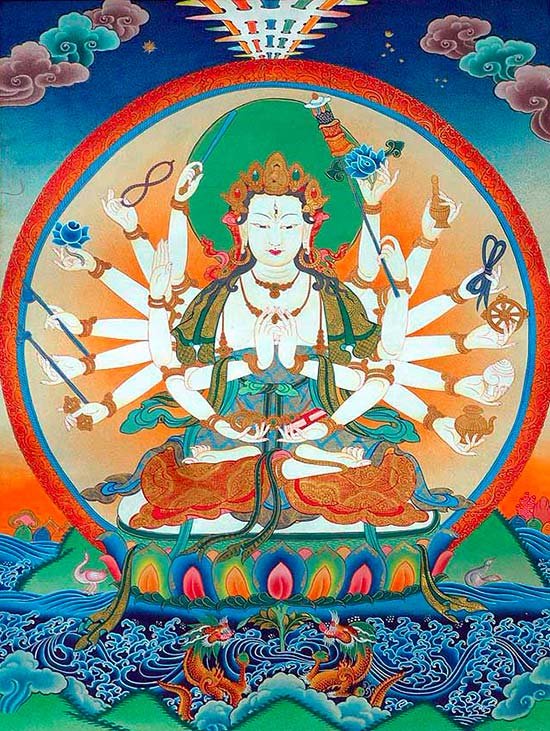Maha Prajnaparamita Sastra
by Gelongma Karma Migme Chödrön | 2001 | 941,039 words
This page describes “vaipulya (developed sutra)” as written by Nagarjuna in his Maha-prajnaparamita-sastra (lit. “the treatise on the great virtue of wisdom”) in the 2nd century. This book, written in five volumes, represents an encyclopedia on Buddhism as well as a commentary on the Pancavimsatisahasrika Prajnaparamita.
Tenth aṅga (member): Vaipulya (developed sūtra)
P’i-fo-lie ‘Vaipulya’. In the language of the Ts’in, it means ‘developed sūtra’. These are the Mahāyānasūtras, for example:
Pan-jo-lo-mi king (Prajñāpāramitāsūtra),
Lieou-po-lo-li king (Ṣaṭpāramitāsūtra),
Houa-cheou king (Kuśalamūlasaṃparigrahasūtra),
Fa-houa king (Saddharmapuṇḍarīkasūtra),
Fo-pen-k’i-yin-yuan king,
Yun king (Meghasūtra),
Ta-yun king (Mahāmeghasūtra, perhaps T 387).
– Innumerable and incalculable are the sūtras of this kind preached for the obtaining of supreme perfect enlightenment (anuttarā samyaksaṃbodhi).
